Context
The University of Cyprus DHC was built in 1999, and so far, two expansions have been completed in 2007 and 2010. Apart from the DHC syste of the University of Cyprus (UCY), no other district heating systems exist on the island of Cyprus.
UCY experiences an accelerating development with new buildings constructed. Thus, UCY is currently in the process of designing a new Energy Center for green technologies, following the State of the Art.
The next expansion of the DHC network is foreseen for 2022 and it is planned to install
A 5 MWp PV plant with a 2.35 MWh capacity electric battery
Various heating and cooling storage systems.
The energy consumed in Cyprus mainly comes from oil- and petroleum products, while both electricity and heat (e.g., space heating, hot water etc.) emits a noticeable amount of CO2.
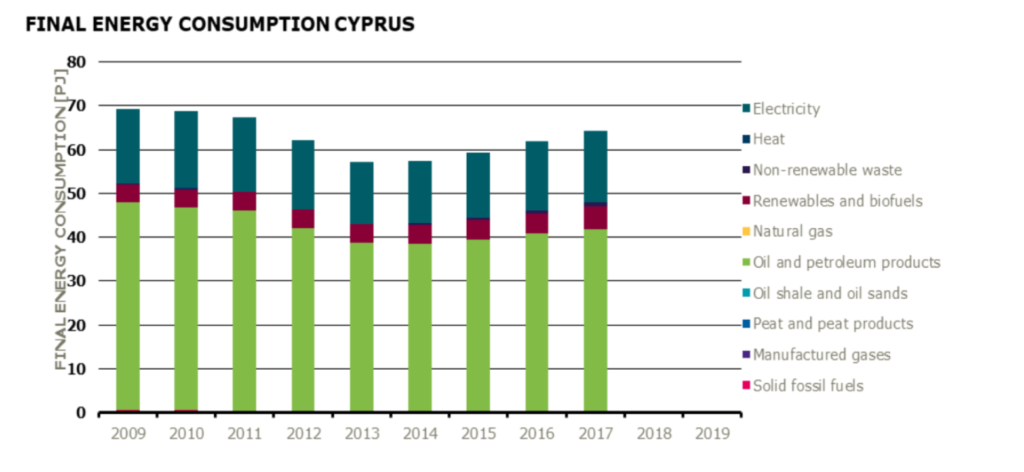
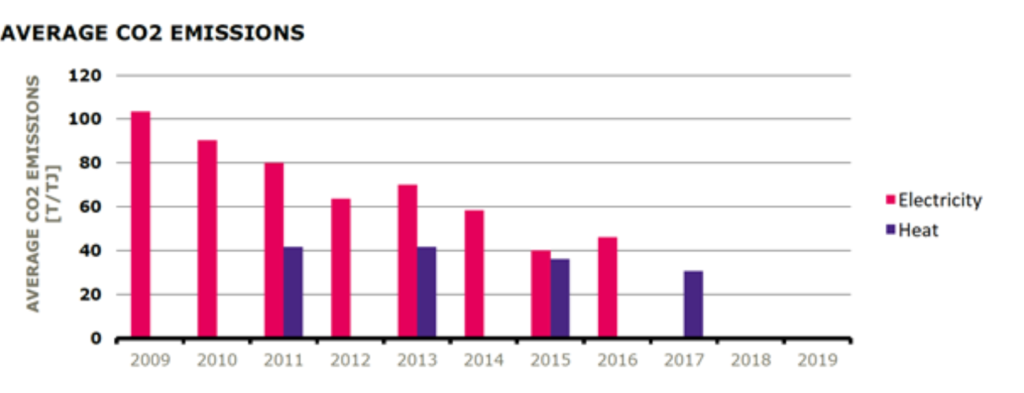
In Cyprus, the annual solar radiation potential is in the range of 1,878 kWh/m2/year. It is a relatively high radiation representing a great potential for solar power as well as solar heating applications. The data shows an intense solar radiation peak in the summertime. This peak is expected to trigger a certain need for cooling. Therefore, thermal energy storage solutions are considered great assets in Cyprus, e.g., potentially storing heat (and cooling) during the summer to deliver heat in wintertime.
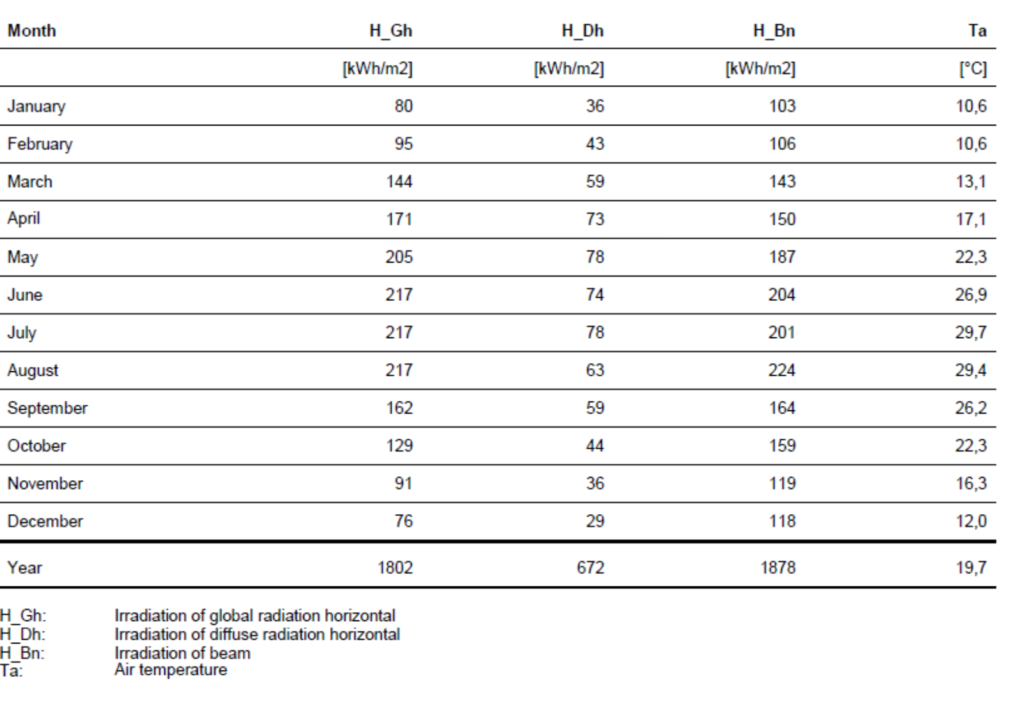
Area
The District Cooling schematic shows the 17 buildings receiving cooling within the UCY Campus with a total area of 91,422 m2. The buildings include 10 individual and 7 in the Social Facilities, “SFC”.
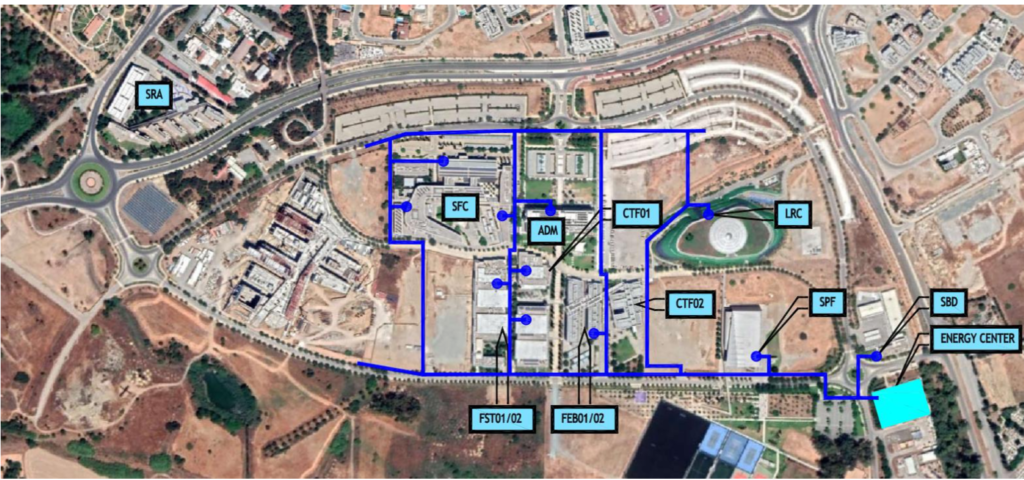
The District Heating schematic shows the 29 buildings receiving heating within the Campus with a total area of 98,520 m2. The buildings include 12 Student Residences, “SRA”.
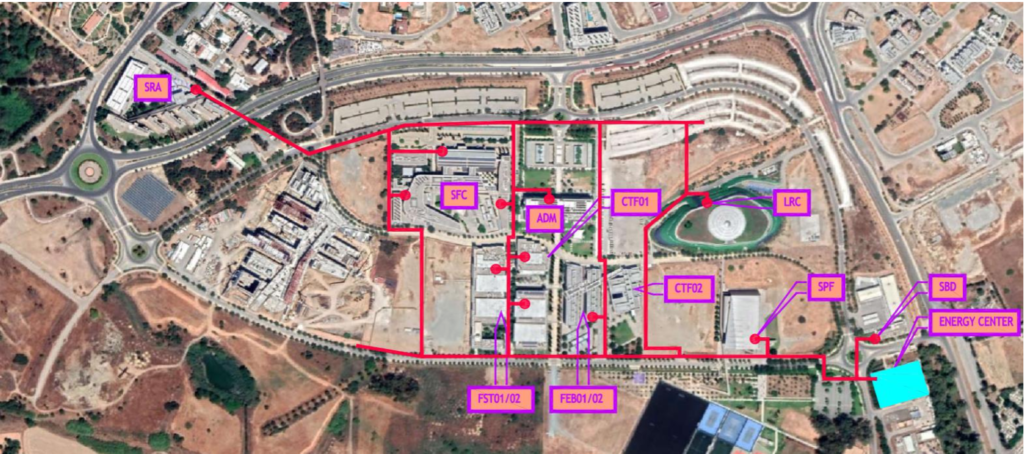
Energy demand
The UCY has three types of energy demands:
Cooling of 17 buildings
in total an area of 91,422 m2 (excluding student residences)
Heating of 29 buildings
in total an area of 98,520 m2 (including student residences)
Domestic hot water
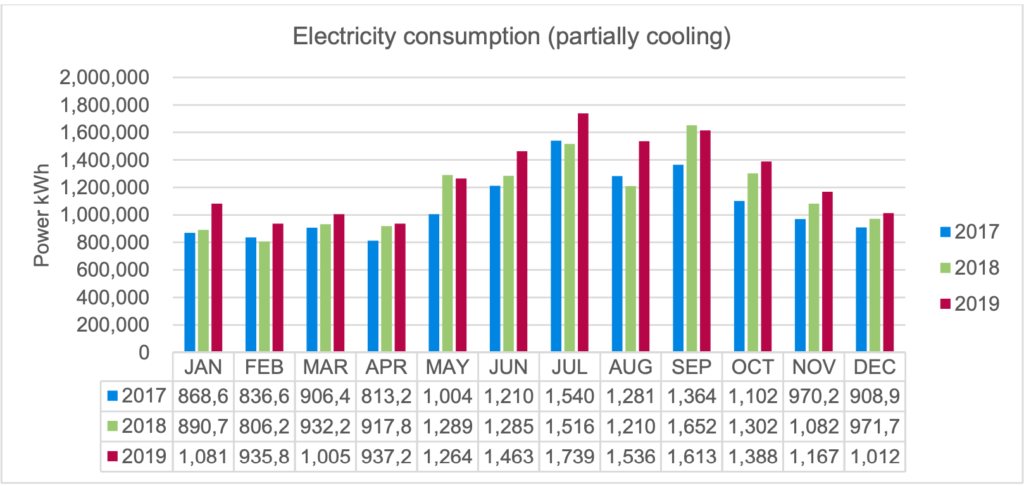
Current energy system
Four oil boilers of each 1,750 kW heating power with a nominal efficiency of 88%. (This 88% is because these are non-condensing boilers, and no heat reclaim is made through the boiler exhaust either).
Eight air-cooled chillers, each nominated to 1,000 kW cooling with an ESEER = 4.12. (A European Seasonal Energy Efficiency Ratio (ESEER) of 4.12 corresponds to a Coefficient of Performance (COP) value of approx. 1.2132).
The new Energy Center plans to include:
Solar heating
Air-cooled chillers
Ice storage (cold storage)
Tri-generation (combined cooling, heating, and power generation)
Oil-fired boilers
Proposed technologies
Considering the previous information, the following technologies and solutions will be studied for UCY:

Solar Heating Technologies; TF- FTC
Investigation of integration of WEDISTRICT solar thermal panels (TC-FTC, Tracking Concentrator for Fixed Tilt Collector) to cover the heating load of the Campus; utilization of the high solar radiation potential in Cyprus.

PV / PV-Thermal (PVT)
Investigation of PV for electricity generation. Comparison of possible PV and PVT solutions (possibly with tracking mirrors) to investigate the possibility of increasing the electrical and thermal outputs. The WEDISTRICT PV-geothermal hybrid will also be considered.

Geothermal System
Investigation of the option of a geothermal system layout as well as the WEDISTRICT PV-geothermal hybrid solution.

Heat Pump
Investigation of the performance and operation of an absorption heat pump compared to a (conventional) compression heat pump (several WEDISTRICT thermocycle technologies are available for comparison).

Advanced Absorption chiller
Investigation of the performance and operation of the WEDISTRICT advanced absorption chiller, compared to the planned air-cooled chillers.

Renewable air-cooling unit (RACU)
Investigation of the option of integrating RACUs in the buildings to deliver cooling instead of the chiller solution(s).

Biomass boiler
Investigation of the low-emission biomass boiler as either a direct substitution of the existing (relatively old) oil-fired boilers, or simply as a back-up solution, for the coverage of peak loads. The biomass performance is to be compared to the performance of the planned oil-fired boilers, included in the Energy Center.

Energy storage
Investigation of various energy storage solutions including: ● Utilisation of an optimised water storage sized for acting as solar buffer ● Utilisation of ice (cooling) storage solution(s) ● Utilisation of an electric battery
Proposed solutions
The combined solutions, presented above were proposed to the UCY for a preliminary assessment. The symbol ‘x’ indicates optional selections for a possibly better direct comparison between the solutions.
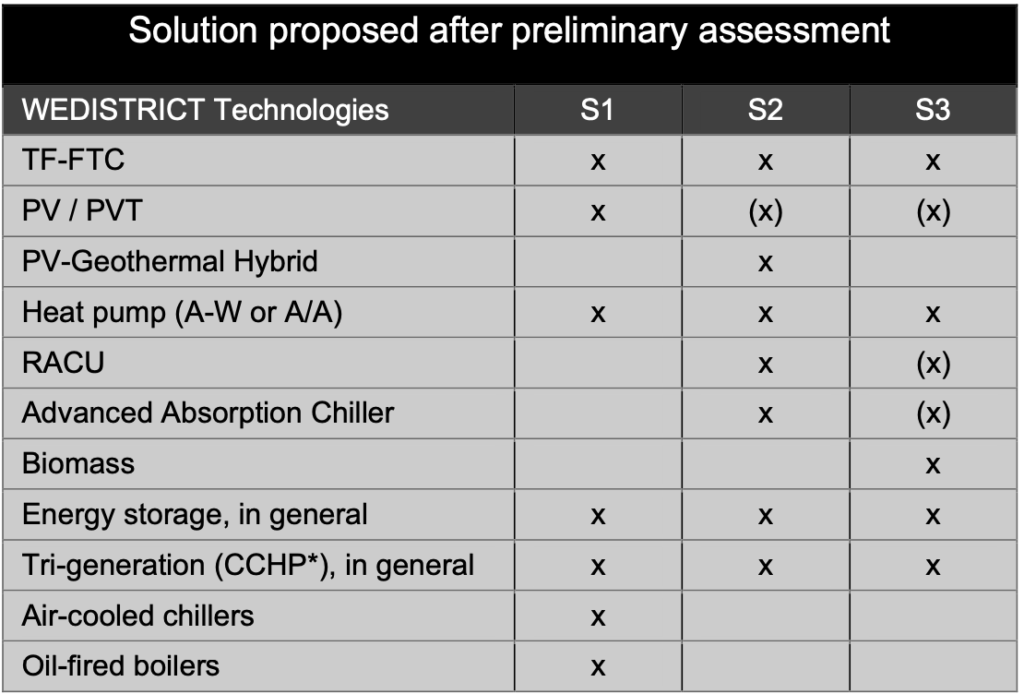
Solution 1
The proposed solution S1 reflects the solution planned for DHC at UCY after the expansion and refurbishment in 2022. This is intended to be used as a benchmark solution. Thereby solution S1 integrates and combines the technologies of FTC, PV, Heat pumps, Energy storage, CCHP and Air-cooled chillers as well as oil- or biomass fired boilers for backup.
This solution is suitable for UCY since it includes the technologies that are being considered for the production of District Heating, (fixed tilt solar collectors, geothermal system), district cooling (Air-to-water or Air-to-air heat pumps, Ice (i.e., cold) storage and Air-cooled chillers) and power production (Photovoltaics) – all three (trigeneration; in the form of a combined cooling, heating, and power plant), which are in the scope for 29 buildings, including student residences.
Expected Impact
Investigation of the installation of the new DHC equipment / plant capacity
to cover the expected DHC and electricity demands of the new residential buildings
Investigation of the possible improvements of the WEDISTRICT solar thermal panels
compared to traditional solar heating technologies
Investigation of the possible improvements regarding PV or PV-T system layouts
Investigation of the installation of heat pump technologies
General advising on planning of energy equipment
for the expansion of the UCY Campus buildings
Solution 2
The proposed solution S2 is a variation of the planned setup using RACU and/or Advanced Absorption Chilling instead of the planned air-cooled chillers to deliver cooling. In addition, part of the heating will be covered by Geothermal heating instead of the planned Oil-fired boilers.
Note that FTC, PV, HP, Energy Storage and Trigeneration are still in this configuration.
Expected Impact
Investigation of the possible improvements related to district cooling
from RACU and/or Advanced Absorption Chillers, as opposed to Air-cooled chillers
Investigation of the impact of geothermal heating to cover peak load heating
as opposed to using Oil-fired boilers
Investigation of the possible improvements regarding PV or PV-T system layouts
in combination with the WEDISTRICT Geothermal Hybrid
General advising on planning of buildings’ energy equipment alternatives
Solution 3
The proposed solution S3 is a variation of the setup using RACU, and/or Advanced Absorption Chilling, instead of Air-cooled chillers for cooling. In addition, the option of the WEDISTRICT Low-Emission Biomass Boiler technology is investigated for the purpose of heat provision, instead of the proposed geothermal (hybrid) heating in S2. Note that FTC, PV, HP, Energy Storage and Trigeneration are still in this configuration.
Expected Impact
Investigation of the possible improvements related to district cooling
from Advanced absorption chillers as opposed to air-cooled chillers (considering results from S2)
Investigation of the impact of using biomass boilers to cover peak load heating
as opposed to geothermal heating or heating from oil-fired boilers.